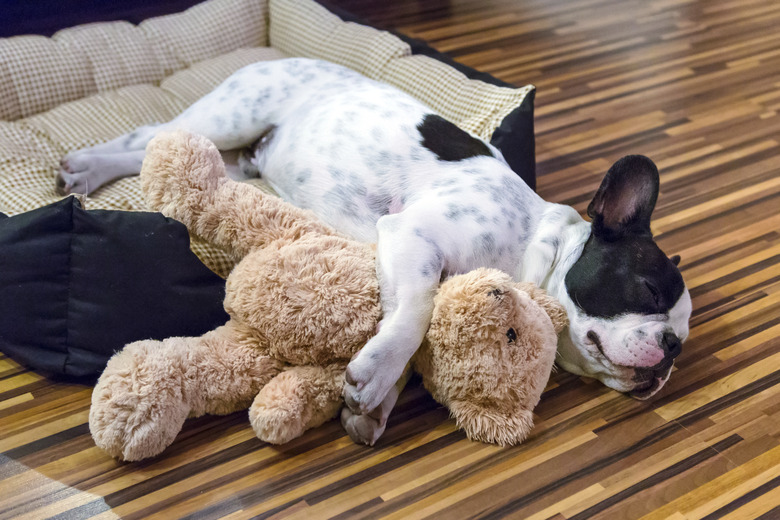Why Is My Dog Trembling While Sleeping?
Pets tremble when they sleep based on their dreams or if they are experiencing a medical issue, according WebMD's pets blog, Fetch. Though sleep rests and restores the body, a dreaming mind is at least as active as an awake, alert mind. Your dog can't tell you what he dreams about but sleeping animals weave dreams from recent waking experiences.
Dogs love to run, but obviously, doing so while asleep would be dangerous. To keep them safe, their brains block their muscles from actively participating in dreams. So if your dog is dreaming about chasing squirrels, the twitching and trembling of his legs and paws may represent the visible evidence.
Dogs, people and dreaming
Dogs, people and dreaming
The brainwave patterns of sleeping dogs and people are much the same, and dogs even learn while they sleep, according to the American Association for the Advancement of Science. Researchers taught dogs commands in two different languages and then attached electrodes to study brain waves during sleep. They found that female dogs performed better than males based on sleep-time brain wave activity.
Dogs pass through the same series of sleep cycles as humans, with vivid dreams occurring during the REM or rapid eye movement – stage. To some extent, how frequently REM cycles occur depends upon the size of your dog.
Small dogs may have dreams every 10 minutes but large dogs have fewer dreams that last longer. An average-sized dog will start dreaming about 20 minutes after falling asleep, Coren says. That's when you'll start to see a dog shivering in sleep, with legs twitching and his eyes darting around behind closed lids, as though he's watching something only he can see – which he is.
Have you moved into a new apartment or house, or have you adopted your dog recently? If so, unfamiliar noises and scents, along with a new bed, might cause your pet to cope with its new surroundings through its dreaming.
The brain stem inhibits movement
The brain stem inhibits movement
All mammals dream but luckily for dogs and others, when they enter REM sleep, a section of the brain stem called the pons kicks in to partially paralyze their muscles, thereby preventing them from physically acting out dream experiences. Otherwise, a dog dreaming that he's enjoying a good romp in the park might be up racing around and barking instead of just making twitchy leg movements and funny little whimpers.
Rehearsing for threatening situations
Rehearsing for threatening situations
Since dogs and people have similar dream cycles, and people sometimes have bad dreams, it seems reasonable to assume that dogs do as well. However, if your dog's dreaming sometimes appears a little distressed, that might be healthy too. Throughout evolution, one key function of dreaming may have been to simulate virtual realities of dangerous situations that dreamers might encounter in waking life.
This allows the dreaming mind to rehearse tackling them without physical risk, thereby increasing preparedness. So if your dog considers protecting his home and humans to be his sacred duty, troubled dreams might be his brain's way of rehearsing strategies in which his heroic actions save the day.


